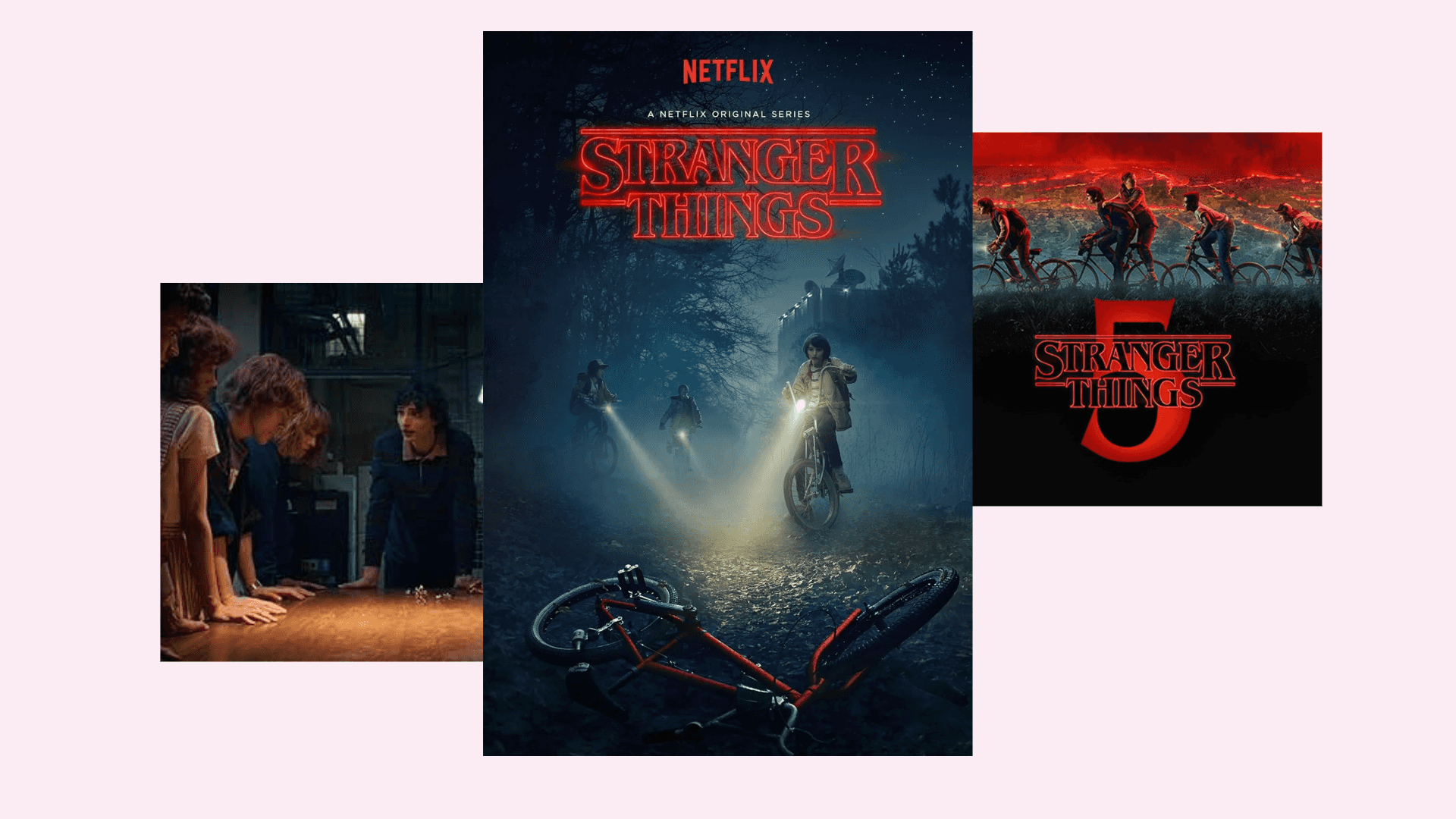
10 Top Tips For Your E-commerce Website Ahead Of Christmas
Written by Sam
Can you believe it’s already that time of the year again? The days are getting shorter, the weather’s definitely getting colder and Christmas songs are becoming a regular occurrence on the radio.
It’s no secret that the festive season is prime time for e-commerce retailers. Did you know the period from Black Friday through to Christmas brings in 50-100% more revenue per day than other shopping days throughout the rest of the year?
With less than a month to go until it’s all over, it’s crucial that you get your e-commerce website in-shape ahead of Christmas to avoid missing out on sales. Saying that, there’s still a whole load of opportunity no matter how late you’re reading this; 1 in 5 British men leave all of their Christmas shopping until Christmas Eve.
Here’s how to optimise your e-commerce website for the festive season.
Offer festive promotions or coupons
People love saving money, especially around Christmas when budgets are pretty tight and everyone is hunting for the best deal they can find. Capitalising on the festive season is all about drawing in these shoppers and showing that you have the bests deals compared to your competitors.
You’ll often see companies offering online coupon codes or price reductions which can play a key role in persuading customers to make a purchase. Although, as great as promotions are, they’re useless if they’re not communicated clearly. Below are some of our top tips for making the most of your festive promotions:
- Having a landing page which showcases the promotion and shows the items that are applicable.
- Make a slide on your homepage hero to draw attention to the promotion, including a call-to-action to visit the product page.
- Add a message to the cart/checkout/product page prompting the user to claim their coupon in order to help raise awareness of the promotion and ensure your customers aren’t missing out.
If you advertise your festive promotion properly across your website this could be key to generating more sales.
Organise your category pages for festive shopping
Pretty much everyone looks for quick time-saving wins when it comes to Christmas shopping. What they don’t want to do is sift through hundreds of irrelevant items to try and find what they’re looking for. This is why you need to use carefully selected categories on your website; it helps the user save time and ultimately leads to more sales.
Some popular ways to categorise your products with festive shoppers in mind are by price (e.g. under £50), by gender (e.g. for him/her), by age group (e.g. children, teenagers) or by relationship (mother, father, grandparents). Think about who your audience may be buying gifts for and what sort of budget they may have, as these are often the two main factors that people will consider when buying Christmas gifts.
If you wanted to take this a step further you could create a filter ‘game’ for the website, helping your brand to stand out from competitors and offering an engaging way for people to find gift ideas. This could work with a bespoke landing page that asks simple yes/no answers (using the categories mentioned above as the template) and showing all products that the customer matches. In essence this is nothing more than a filter menu, something that many e-commerce sites already offer, but simply re-designing it into an interactive Christmas-themed game.
Optimise your homepage for festive shoppers
Your website homepage could have a ‘promoted gifts’ section to encourage sales, featured on a hero image or a slider to catch the customer’s eye and draw them in. This should be a selection of your most popular products; if you know that lots of users will be visiting your site for a certain product, it only makes sense to make it easily accessible for them.
To encourage user engagement, you could even set these promoted products on a Christmas-themed background. Now, this shouldn’t just be tacky cartoons of Santa and Rudolph, especially if you have a more up-market brand. Keep the design fairly simple, but incorporate subtle images of things like snowflakes or wintery scenes to ensure your brand is not obscured. Of course, if cartoons of Santa and Rudolph fit in with your brand’s image then go for it!
Another great way to get users to click-through from a homepage banner is to include a discount code that can be added at checkout. People are usually looking to save as much money as they can at Christmas, so this is a great way to catch people’s attention and add value the instant they land on your website.
Clear delivery times
Getting a delivery on-time for Christmas is critical, even when people leave it until the last minute to place their order. Remember – if you make a good impression at Christmas, customers will be far more likely to buy from you throughout the rest of the year.
Offering a short lead time on delivery (even if charged) is one way to keep customers buying until the very end of the festive period, but you also need to communicate this delivery time very clearly. This is going to help in a number of ways:
- If someone orders too late and doesn’t realise, you’ll increase your chances of a return.
- If your delivery time is guaranteed for Christmas when a competitor’s isn’t, you’ll be in pole position to get the sale.
- If your margin on next day delivery is high, you will be in a good place to cash-in here.
We’d recommend placing a large banner on the homepage advertising how many days are left for Christmas delivery. Integrating a countdown in this element will increase shopper urgency and should also improve conversion rates. A smaller, site-wide banner can be helpful too, possibly alongside a notice just prior to checkout.
Gift wrapping upsell
Offering gift wrapping on checkout is one of the ultimate lazy-man shortcuts. You’d be surprised at the number of people that are willing to pay over the odds to save themselves a few minutes in the run-up to Christmas. If you have the ability to offer this service then make sure you add the option at checkout. Amazon have been successfully bumping up their AOV by offering this for years, and if there’s any online retailer setting the pace it’s Amazon.
This option goes hand-in-hand with our next point.
Make it easy to have the delivery address different to the billing address
Combined with the gift wrapping upsell, this creates the lazy-man’s dream. This point could require some technical amends as some payment processors insist that the delivery address matches the billing address to reduce fraud. This is another quick win which can give you a leg up over any competitors that don’t offer this functionality.
If your payment processor won’t allow this, consider switching to Stripe, who’s ‘Radar’ service identifies fraud efficiently, whilst allowing different addresses.
Multi-buy deals on generic gifts
Want to know why Lynx Africa gift-sets are such a popular gift (to buy, not receive) at Christmas? Because more times than not, people get them on multi-buy deals.
Multi-buy deals such as ‘3 for 2’ offers work really well on generic gifts such as candles and make-up sets. Boots is a good example of a brand that does this; go into any Boots shop near Christmas and you’ll see ‘3 for 2’ labels on a wide range of products from £2 to £80, with the cheapest one being the one that you get free.
These kinds of deals encourage the user to spend more than they were originally planning to in order to qualify for the offer.
Deals such as this are also ideal for a lazy Christmas shopper who buys similar items for a lot of people. They’re likely to choose this option because it’s quick, easy and they don’t need to put too much thought into each gift, therefore it’s certainly worthwhile offering this option on your website.
Learn from last year
Did you make a lot of sales last year? Yes or no, there’s always room for improvement. In the lead up to the festive season make sure to look through your analytics from previous festive campaigns to see if you can spot any patterns which could allow you to improve the user journey and reduce the number of abandoned carts.
Some key patterns to look for:
- Has server speed been slow around the festive season due to high levels of traffic? If so, it might be worth looking at your website infrastructure and upscaling around the festive season to make sure that everyone is getting the best experience possible.
- Selective products aren’t selling? View competitors and see how they present the product on their website; there may be something that your product page is missing.
- People aren’t using festive coupons? Maybe the coupon form fields are too hard to find and therefore people are clicking away, leading to lost sales. Some quick design optimisations could easily fix this.
There are loads of possible patterns to look out for, just make sure to spot them before it is too late.
Analytics tagging for different channel attribution
Most, if not all, digital marketing platforms often have documented methods for tracking when potential customers convert from your marketing activities to your website and start to browse your products or services. A large majority of companies tend to use Google’s free Analytics platform, but there are other custom tracking platforms out there too like Hotjar and Crazy Egg.
To get the most out of your analytics platforms, it could be wise to check with your marketing and development teams to see if everything is set up and tracking properly. There’s nothing worse than discovering that your tracking tools have been reporting misleading information.
Once you’ve confirmed that your tracking is in place you will be able to gain a better understanding of how customers interact with your website, allowing you to customise the experience to make sure every platform is performing optimally. For example, by creating custom landing pages or showing different products for different platforms/marketing campaigns.
Nearly all tracking tools allow real-time tracking (or near-real-time tracking). Real-time tracking is really powerful when trying to identify what is and is not working. For example, you can see where users are dropping off and if there’s something that may be stopping them, such as a website bug or if the page has not been laid-out in an easy-to-use fashion.
Utilising other marketing channels
Whilst a well-optimised website is crucial for any e-commerce retailer over Christmas, utilising your other marketing channels can make all the difference.
Sending out an email newsletter with some of your best-selling products can be a really easy way to boost sales at Christmas. You could even reward your email subscribers with a unique discount code to further encourage conversions. If you really want to go the extra mile, you can use a plugin or automation tool such as Zapier to produce a personalised email newsletter based on each subscribers’ purchasing history.
Publishing a blog post highlighting some of your top picks for the festive season can also be very effective. For example, you could publish a blog titled ‘Our top Christmas gifts for every budget’, splitting it into sections for gifts under £10, under £50 and under £100 etc. You could even publish a blog that highlights your top picks depending on who people are buying the gift for. Either way, your audience will be sure to appreciate the gift ideas. This can also make for great social media content.
Finally, putting some budget behind paid search, shopping ads, display ads and social advertising campaigns can be a great way to attract new customers. Re-marketing could also prove to be a useful strategy to encourage sales from people who visited your website but failed to convert. Check out some of our top tips for optimising your PPC campaigns for the festive season.
No doubt you will have already seen enough Christmas-themed promotions, advertising campaigns and deals to last you until next year. But with so much noise in the e-commerce space at Christmas, these seemingly small things can be exactly what you need to stand out from the competition.
Do you have any other tips for optimising your PPC campaigns ahead of the festive season? Why not comment below or let us know on Twitter or Instagram?
Want to discover more digital marketing tips and tricks? Why not sign up to our mailing list for all the latest insights from Flaunt Digital?








